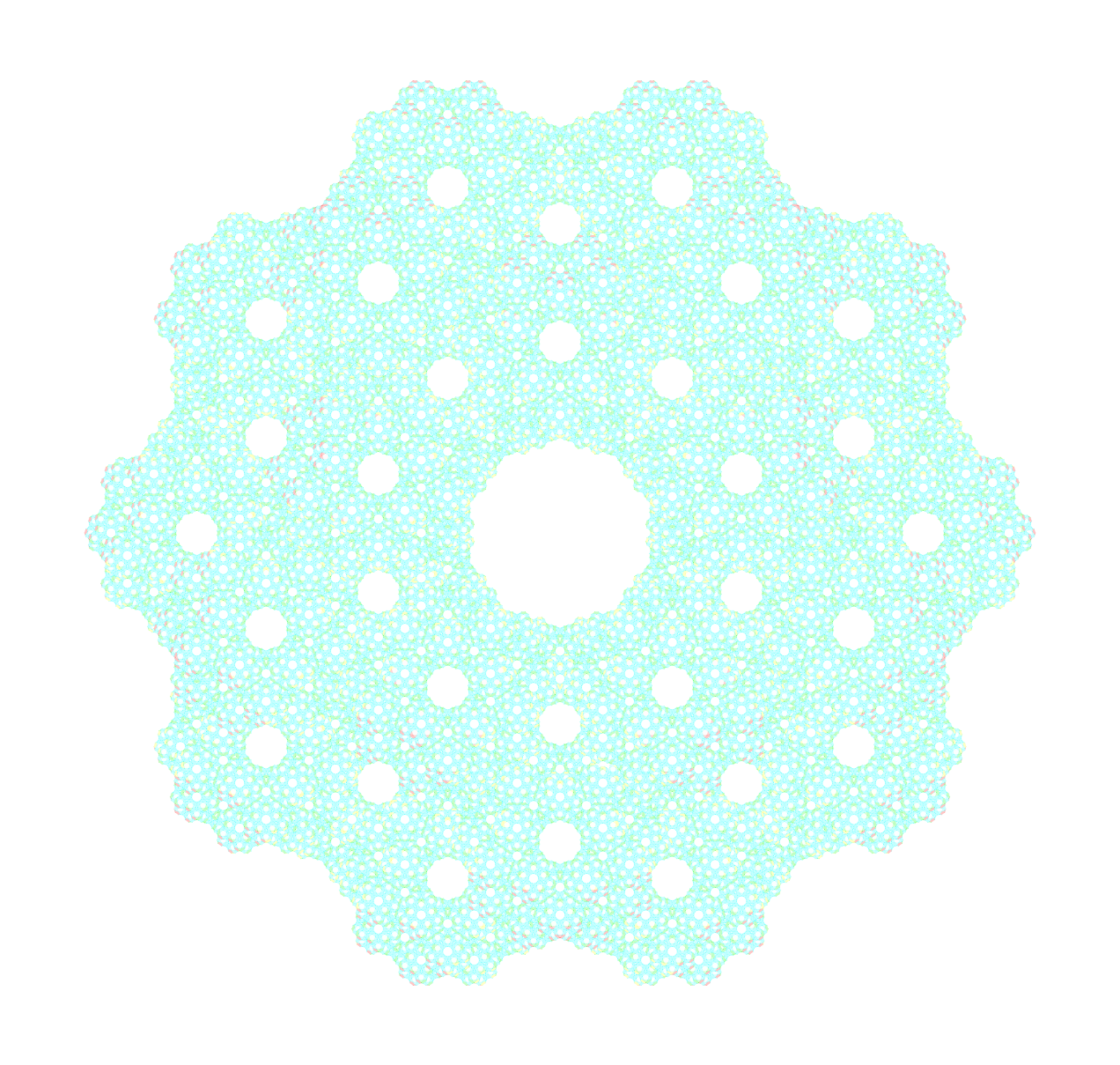Inspired by some time spent messing around with fractals in Blender in early high school, I have spent the greater part of a year working on a program to generate .svg image files of fractals constructed with icosahedra and icosidodecahedra. After realizing that the files for the higher-order fractals were massive, over-inflated with elements for faces, lines, and vertices obstructed by elements rendered above them, I set out to improve the program by culling these hidden elements. The majority of the total development time was spent iterating on this culling algorithm to take the union of a collection of polygons and another polygon, determining if the newly introduced polygon contributed to the result or not. I’ve written about this in more depth on the project README.md.
Details
- Language: C++
